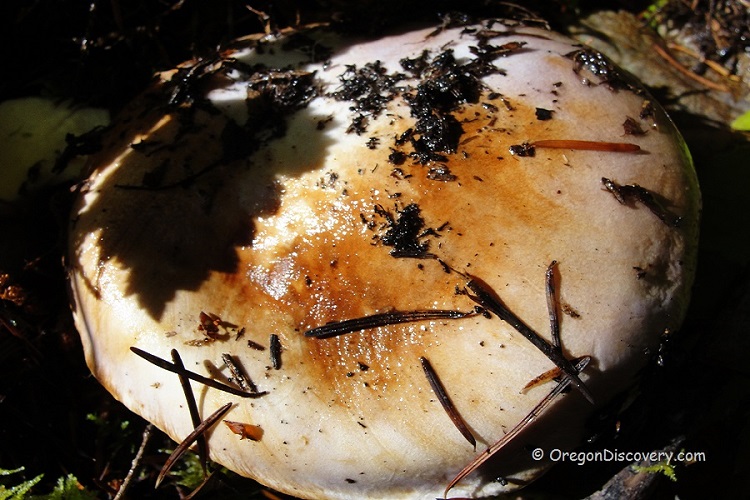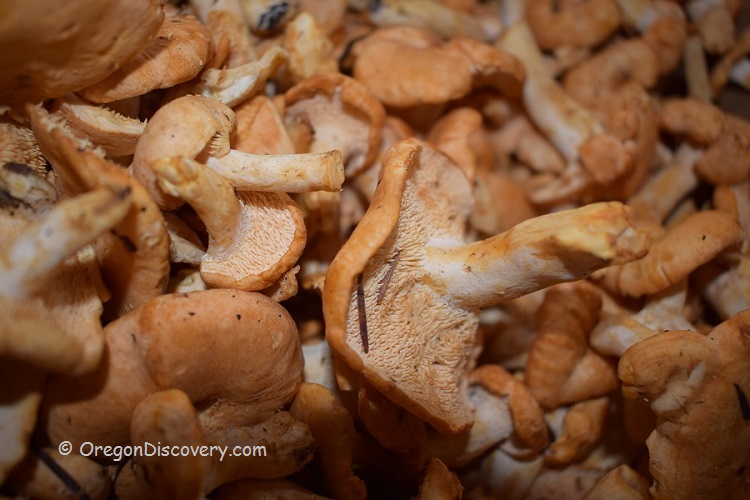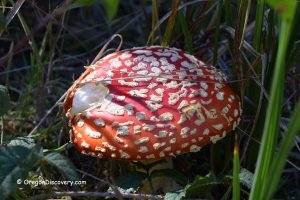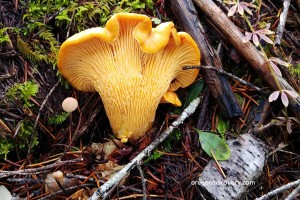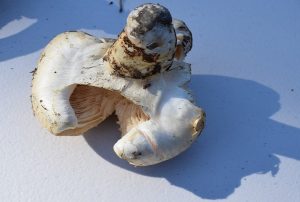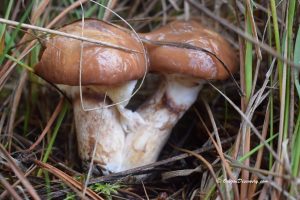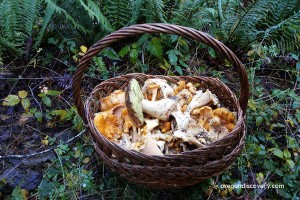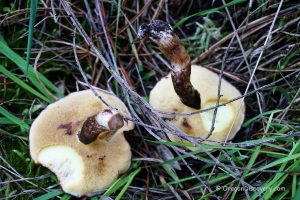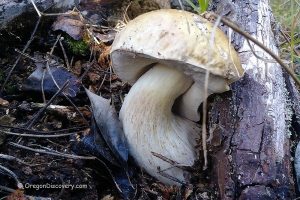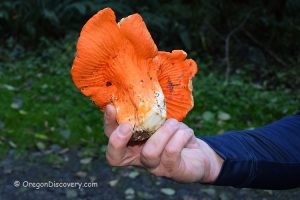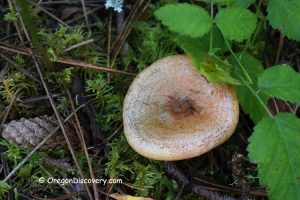• Hedgehog mushroom is easily recognizable by tooth-like spines
• The easy identification makes this species one of the safest for novices
Hedgehog mushroom (Hydnum repandum) is a small family of popular edible fungi. Hedgehog mushroom is also known as Sweet Tooth for its tooth-like spines instead of gills or tubes. Typically, the mushroom is medium-sized, sometimes large, the color of the cap could be yellow, orange, or brown.
Another similar species found in the Pacific Northwest, Depressed Hedgehog (Hydnum umbilicatum) tends to be smaller in size, pale-yellow to deep orange with depressed cap, and hollow stem.
Hydnum repandum or "true" hedgehog lacks deep orange pigment, has shorter stem, larger cap, and smaller spores.
Like chanterelle, hedgehog mushrooms have potent insecticidal properties and are typically free of maggots.
Identification & Habitat
Both species are easily recognizable by light-brown or orange bristly teeth. The easy identification and the fact that the hedgehog doesn't have any poisonous counterparts make this species one of the safest for beginners.
These species are abundant in many regions of Oregon including coastal forests, the Oregon Coast, and the Cascade Range. Hedgehog grows on the ground of grassy, leafy and mossy areas of coniferous or mixed forests and often can be found at the same location where chanterelles can be found.
Hydnum repandum grows singly or in groups and is usually found in mixed woods; it can be associated with a variety of different trees including conifers and beech.
Hydnum umbilicatum is common in coniferous and deciduous forests, under forest shrubbery including rhododendron. Typically, they are fruiting in a group and scattered across the ground. If you found one, carefully check the area around your find.
Cap:
D. repandum (D.R.): Wide, convex or concave, irregular, often depressed, beige, yellow, orange, or brown, up to 6 inches (15 cm) wide.
D. umbilicatum (D.U.): Small, convex, sunken cap center, pale orange, 1 to 2 inches (2 to 5 cm) wide.
Cap's Underside: Tooth-like spines up to 6 mm long, cream or orange colored.
Spores & Print: Round, white.
Stem:
D.R.: Solid, short, thick.
D.U.: Solid, proportionally long, thin.
Flesh:
D.R.: Firm, white to pale cream.
D.U.: Firm, pale orange to beige.
Fruiting: Singly, scattered, or in small groups.
Habitat: Coniferous and deciduous forests, prefer mossy and leafy grounds.
Season: Late summer through late fall in the Cascades and the Coast Range. January through April on the Southern Oregon Coast.
Look-alikes: Giant hedgehog (Hydnum albomagnum) - edible, larger, and paler than D. repandum.
Nutrition Facts
Hedgehog mushroom has a high nutritional and culinary value. A great source of carbohydrate, protein, and fiber, this fungi is also extremely high in dietary minerals including copper (1,945%), manganese (1,105%), iron (292% RDA), magnesium (65%), calcium (60%), and zinc (60%)***.
Because of a high content of protein, iron, and other minerals, mushrooms can be a meat alternative.
Methods of Cooking
Hedgehog mushroom has a sweet and meaty taste. When young and firm, it tastes better. Older and bigger species can have a bitter flavor. Do not eat hedgehog mushrooms raw. The cell walls are hard to digest and it can cause an upset stomach. Any type of cooking helps break down cell walls, making them easier to digest. Clean mushrooms gently with a brush, check spines under caps and if it is damaged, cut it off.
Hedgehog mushrooms are great for sautéing, stir-frying, pickling, or freezing. Drying is not recommended.
*** Nutritional value (DV) per 100 g of dried Hydnum repandum.
You May Also Like
Disclaimer
This is not an official guide to wild mushroom foraging. Please, do your own research, be sure to practice with a mushroom expert before you pick up and consume any wild mushrooms. Before you start wild mushroom harvesting, learn to accurately identify poisonous mushrooms as well. All wild edible mushrooms must be thoroughly cooked. Make sure that you are not allergic to a new mushroom by trying a small amount before eating more.

